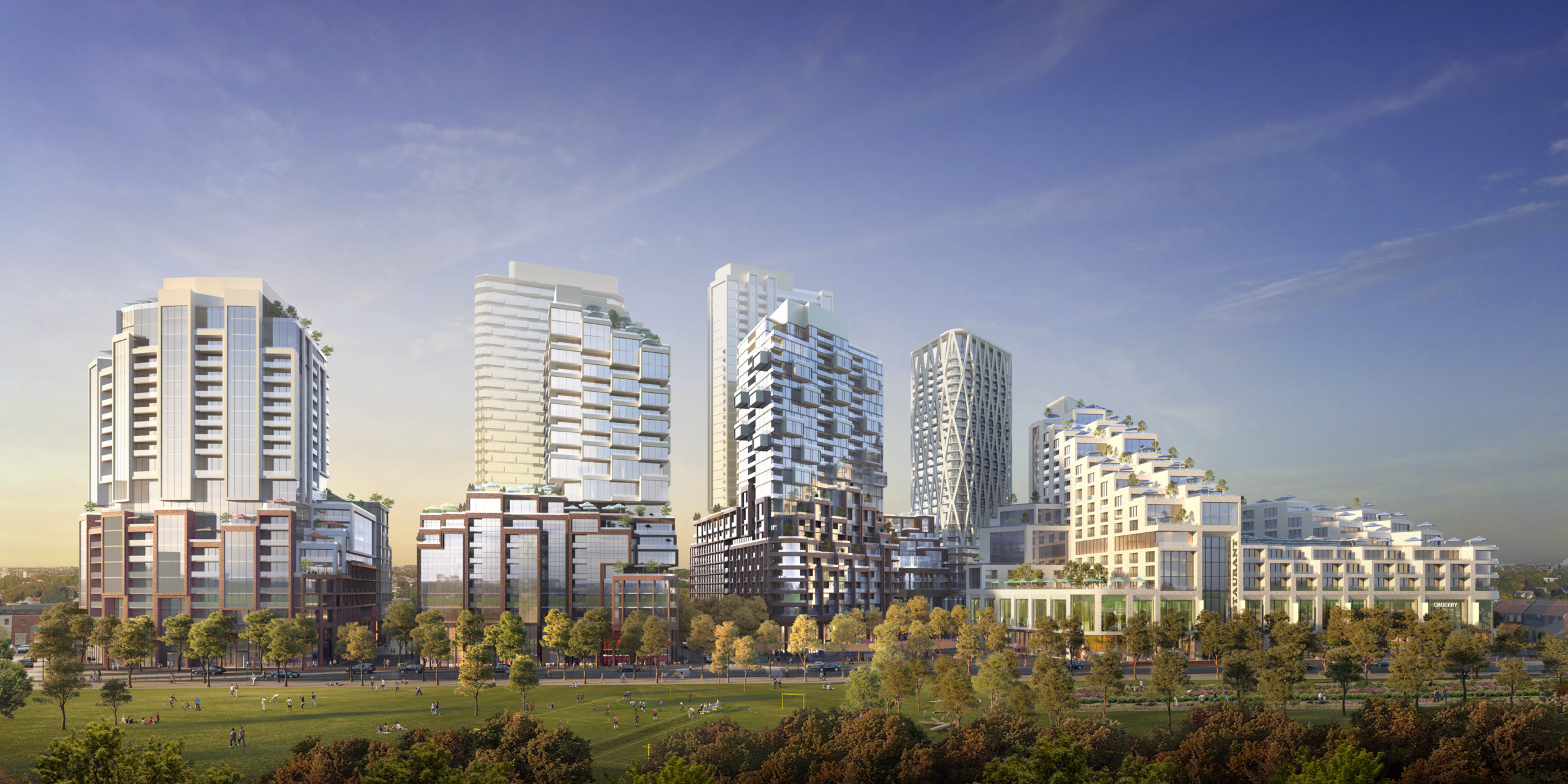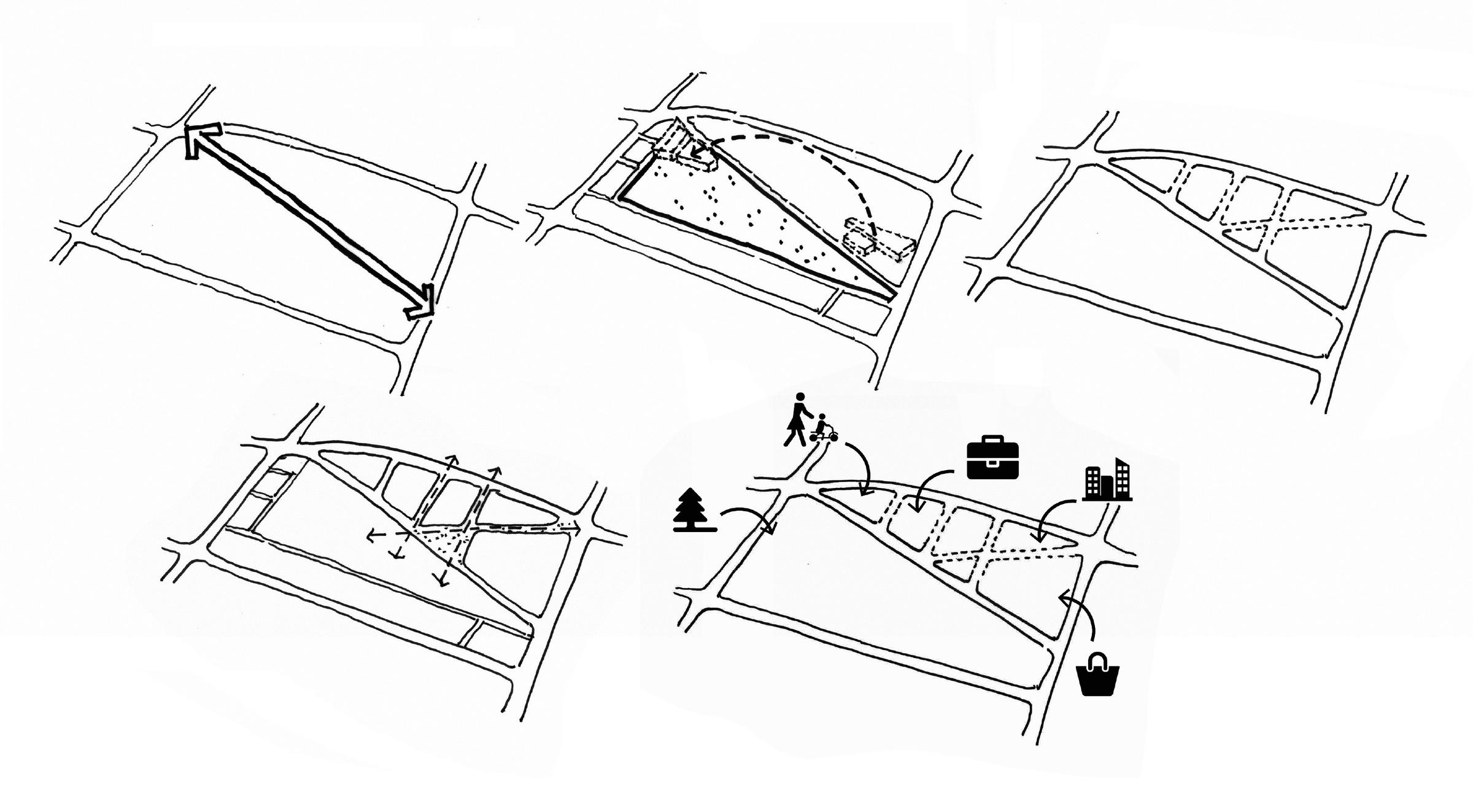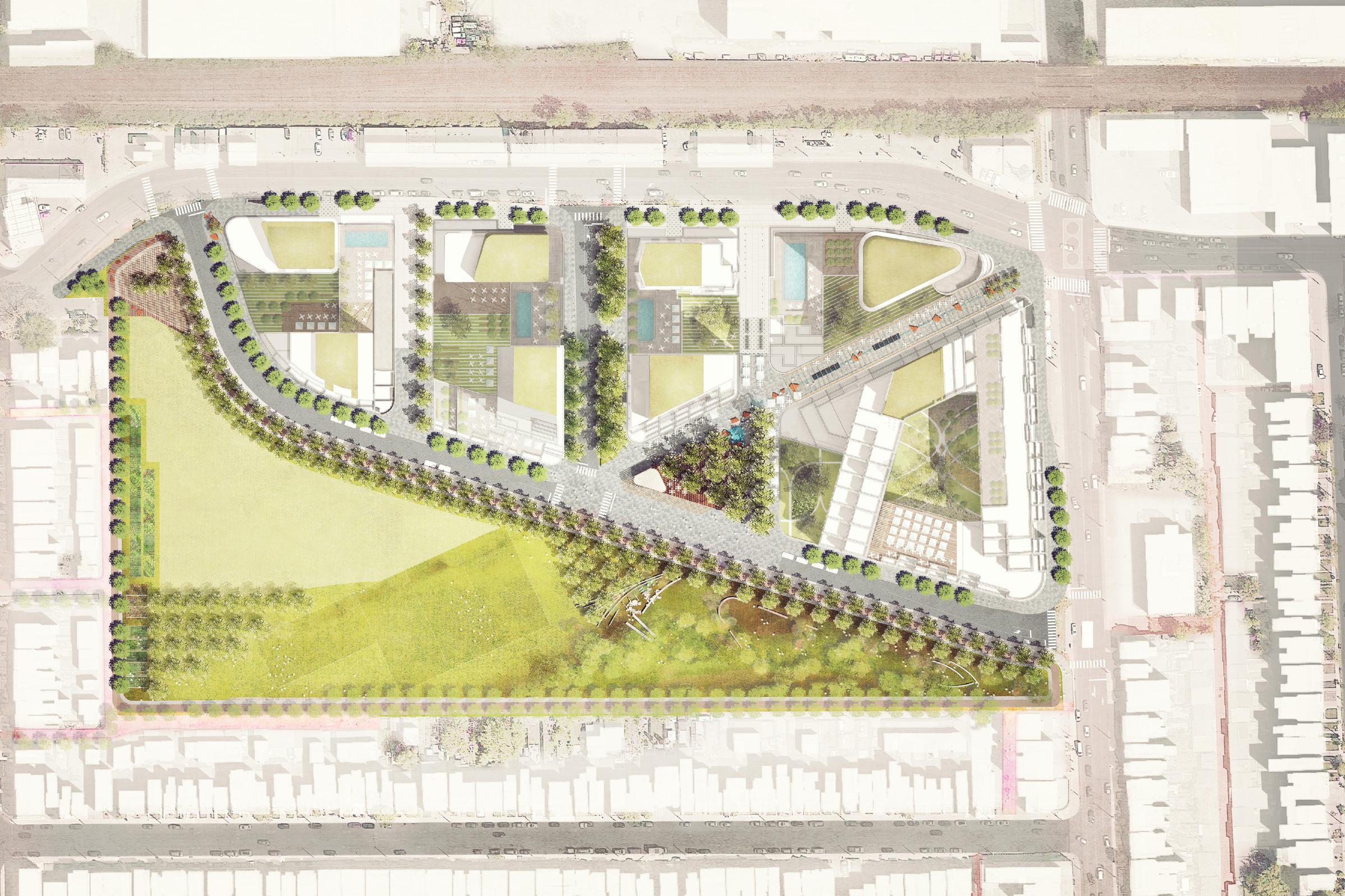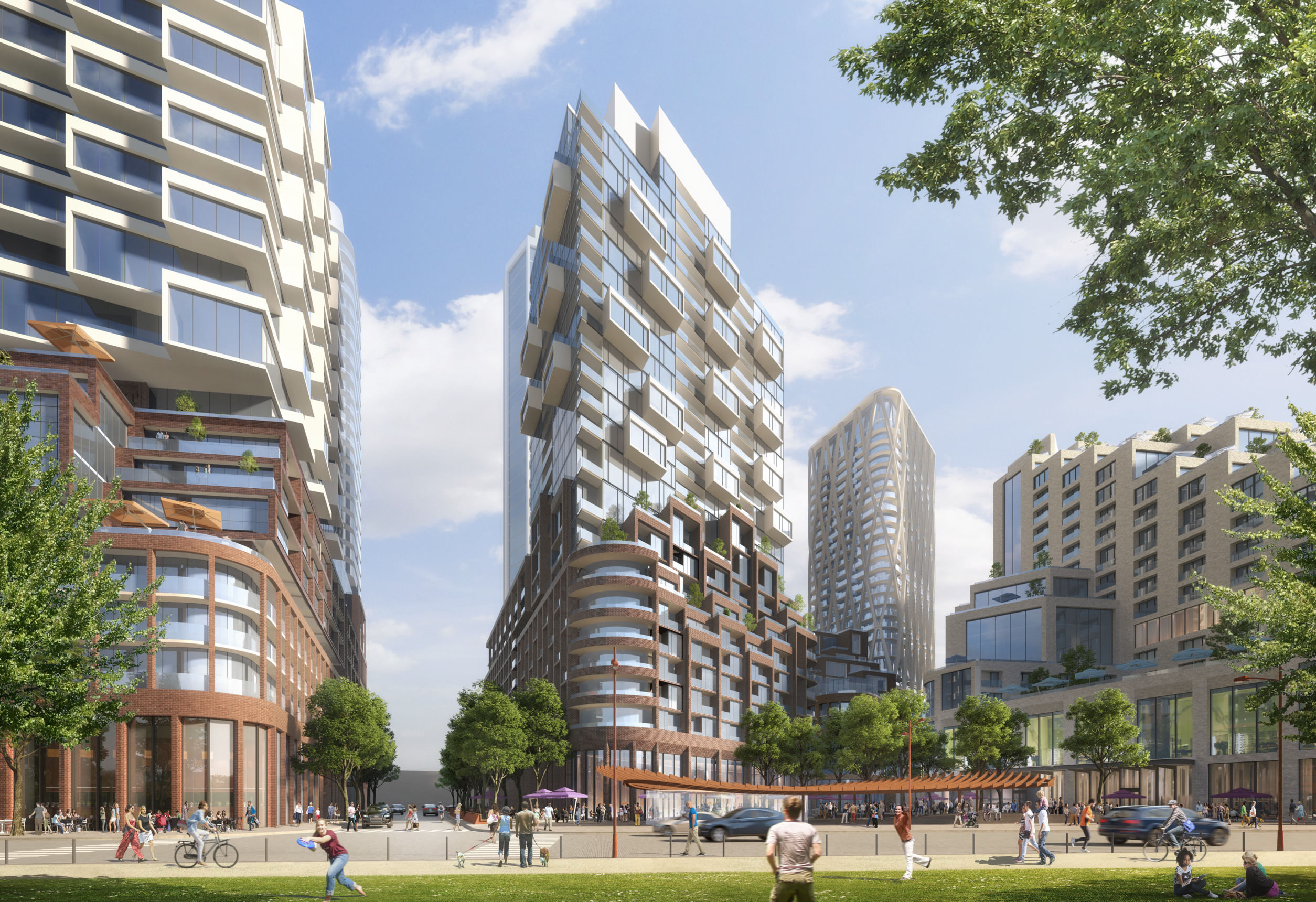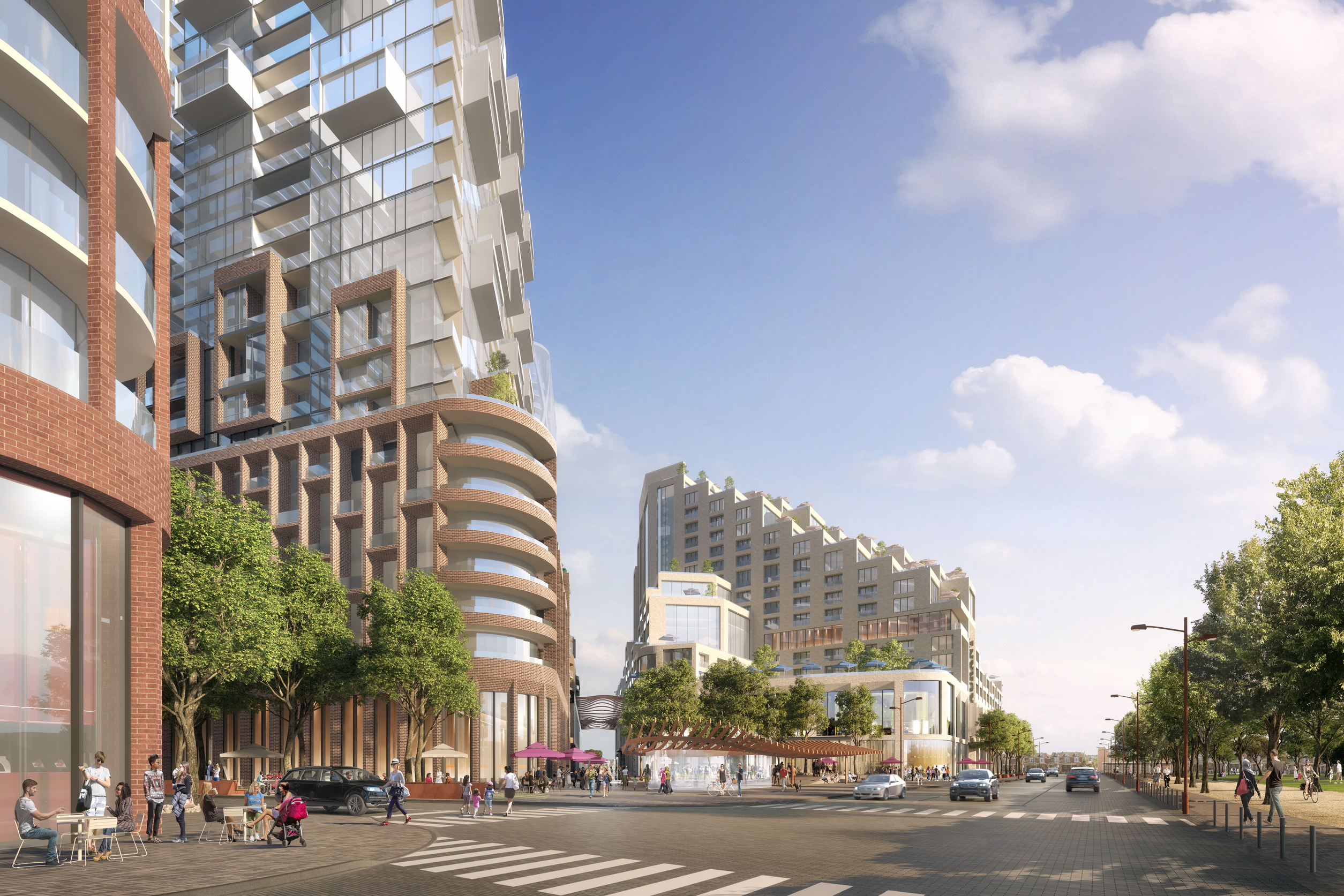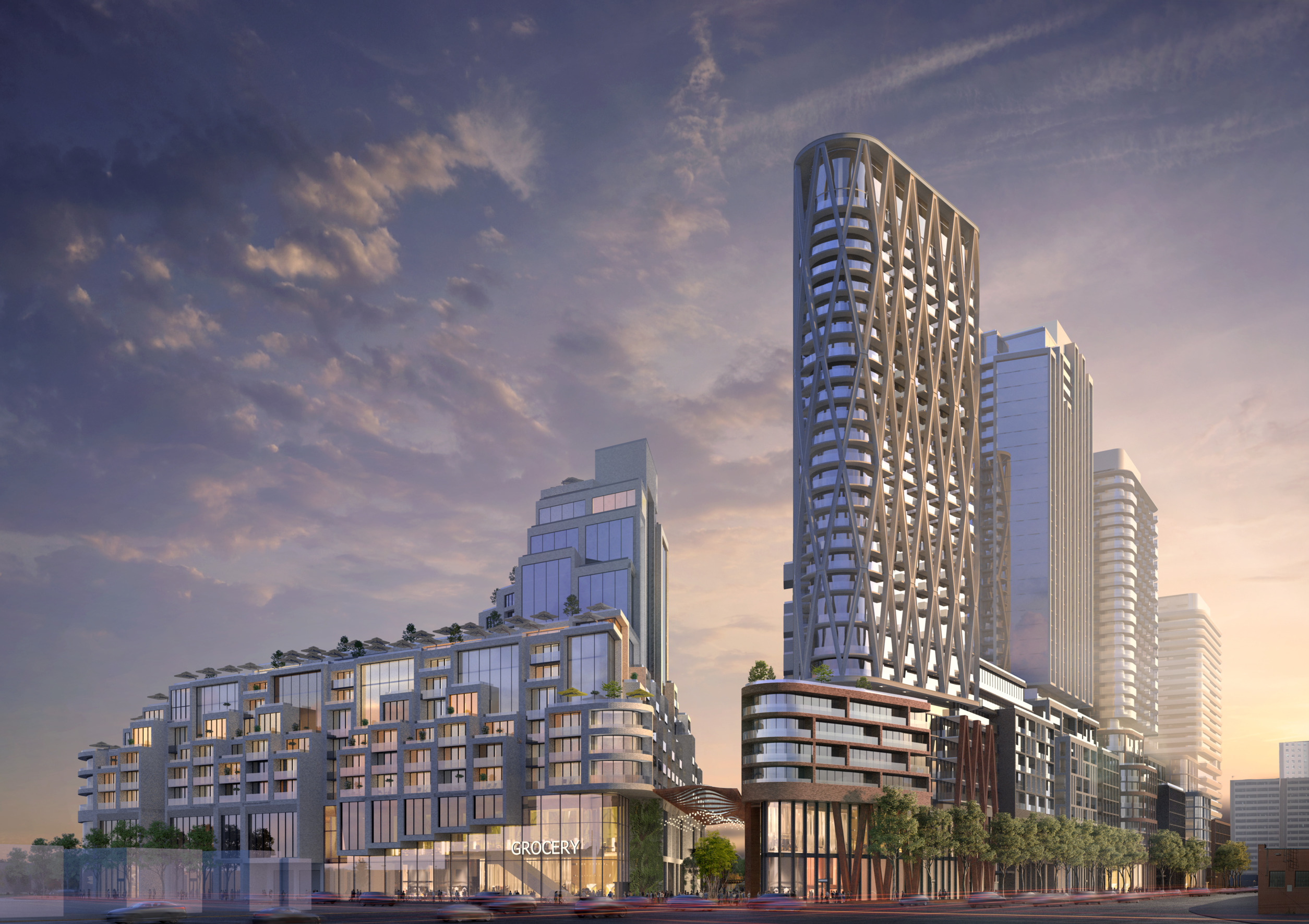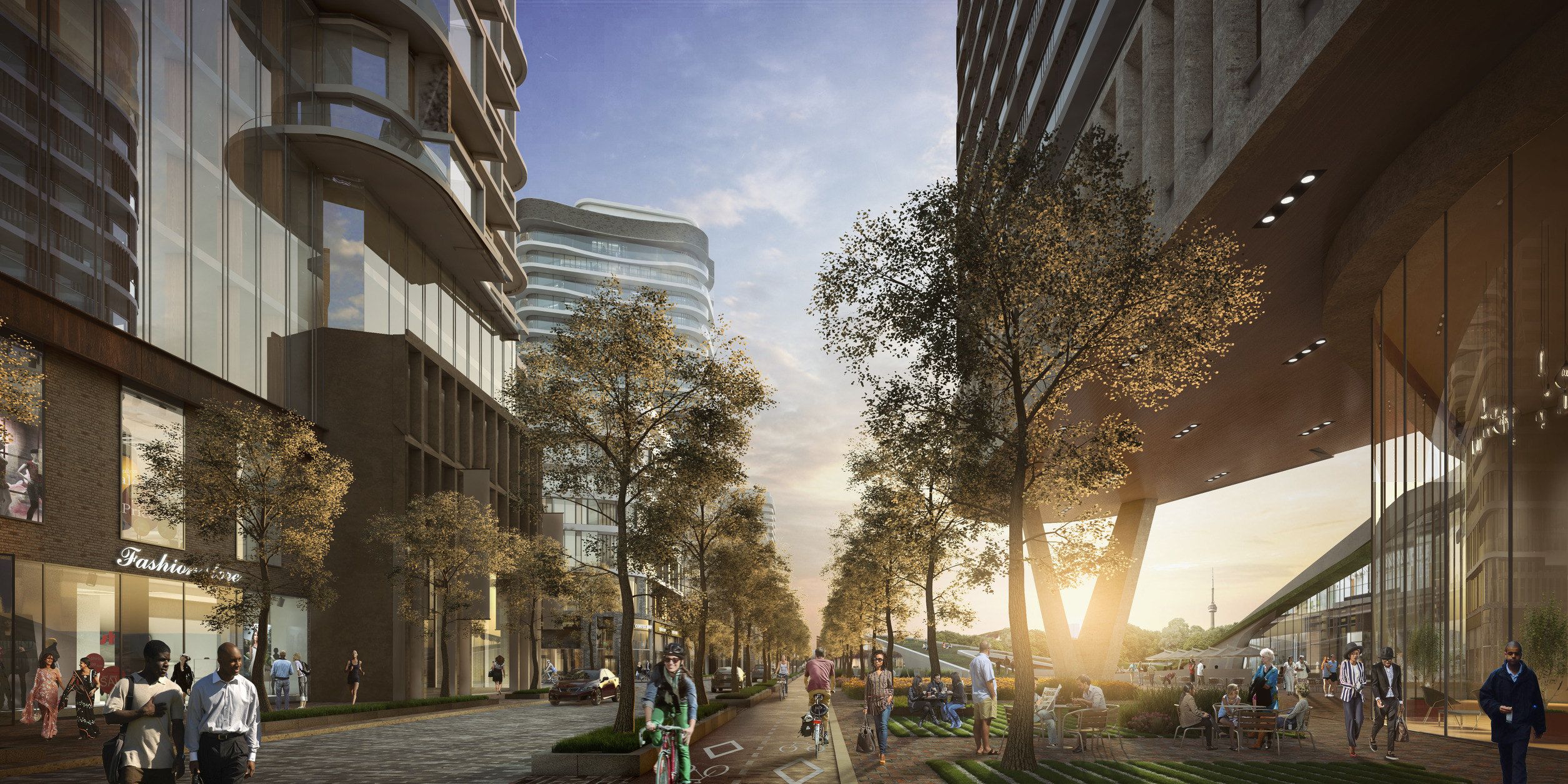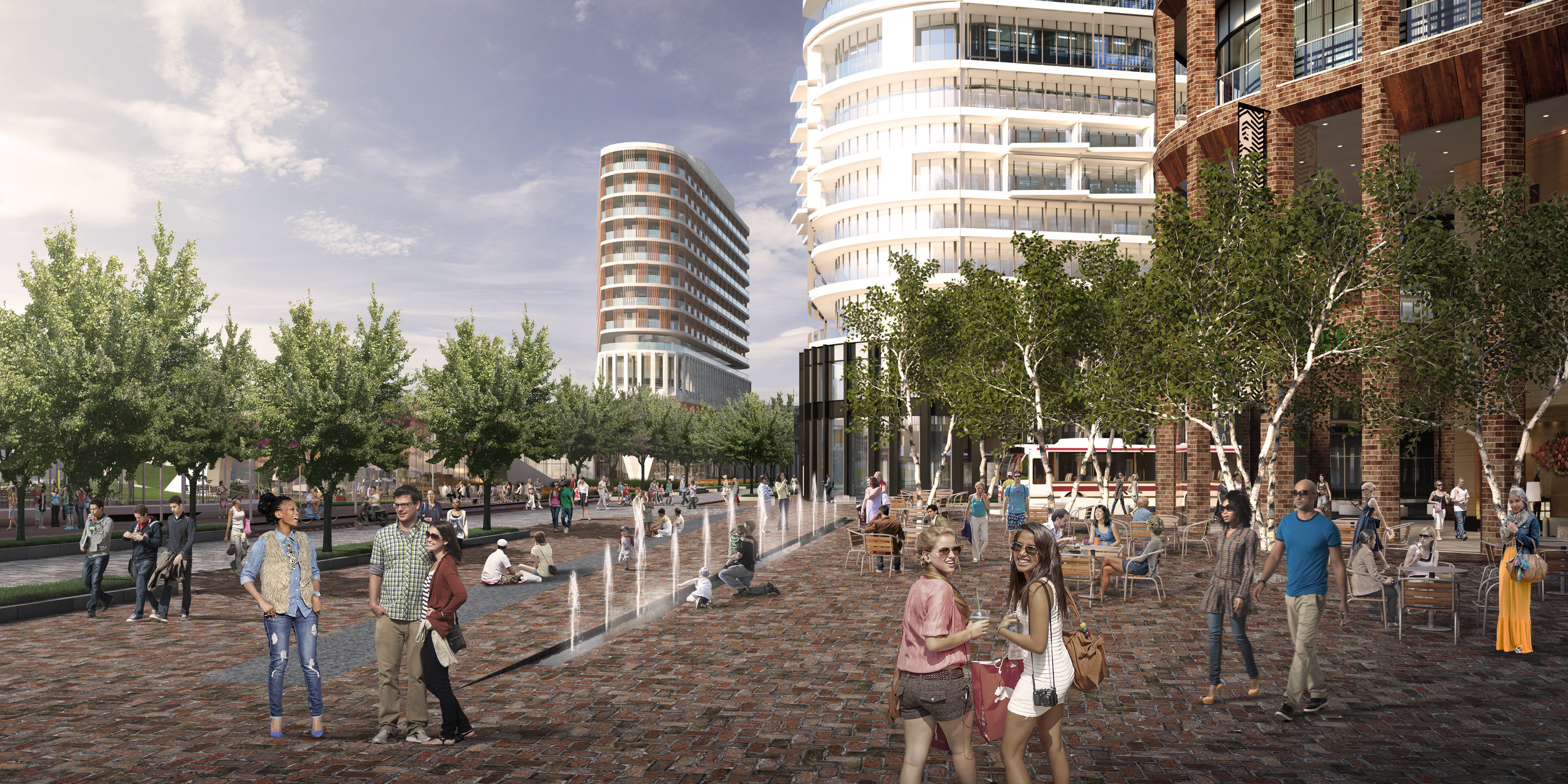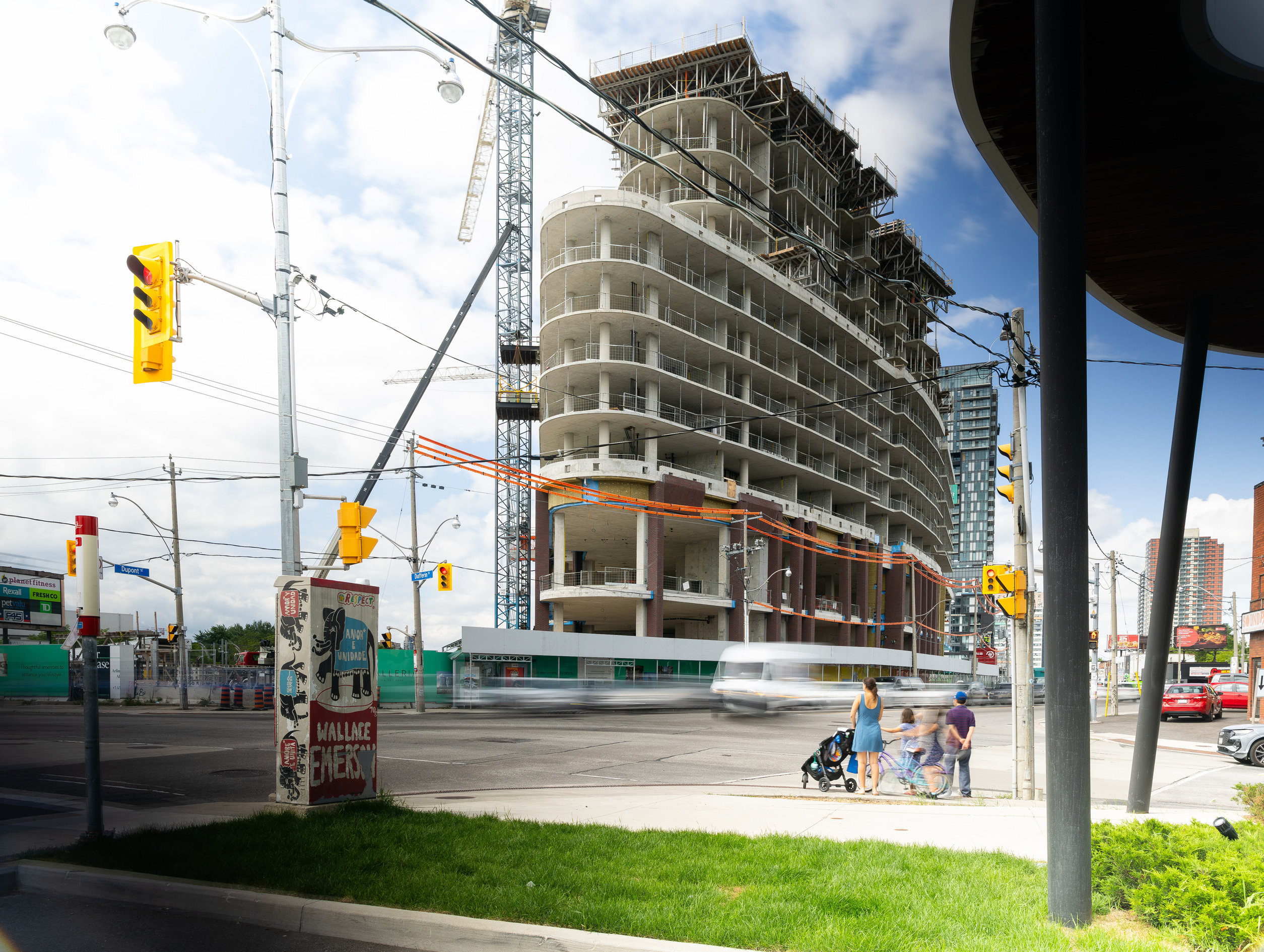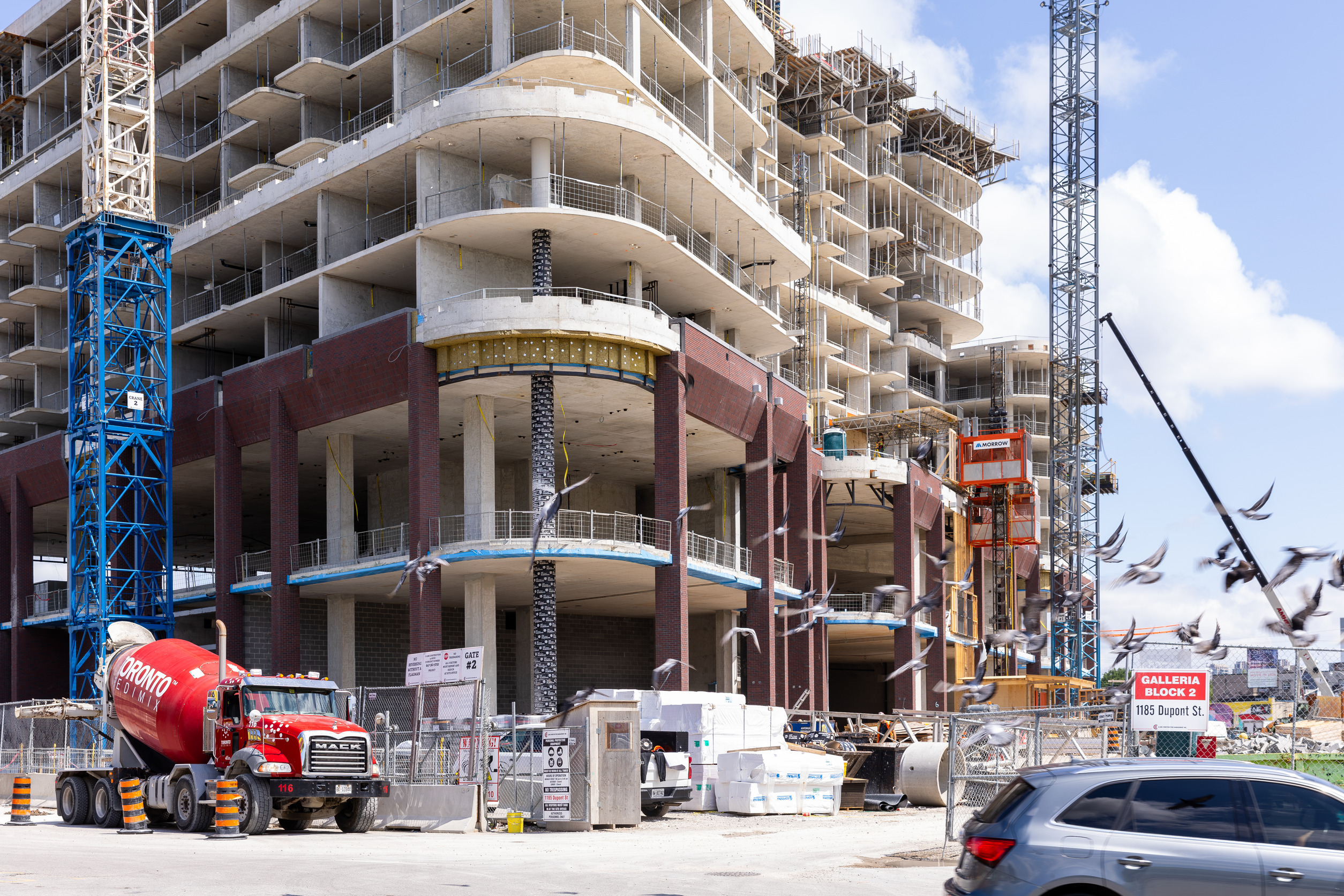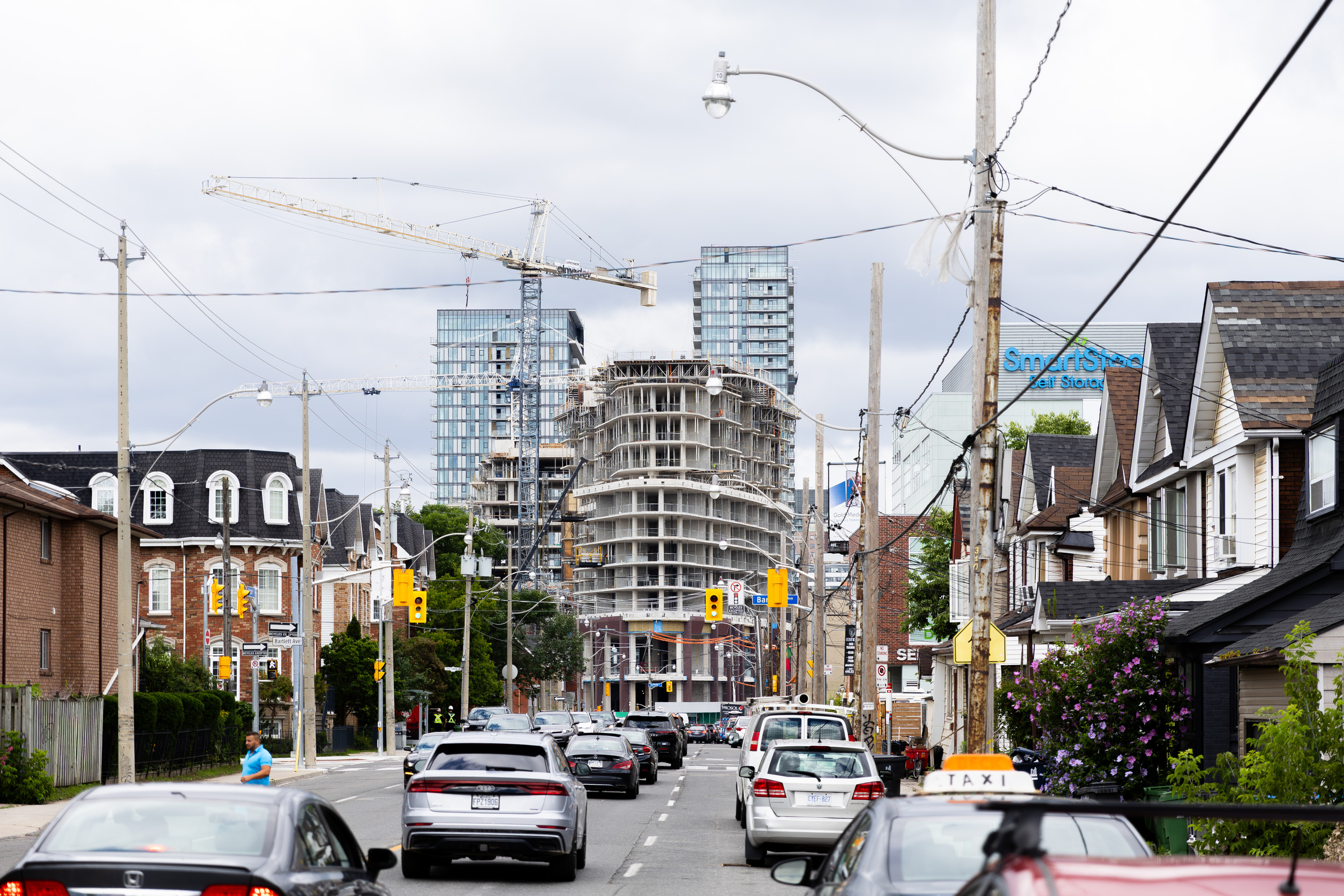In close collaboration with the City of Toronto and urban planners, HPA developed the master plan for the Galleria Mall property at Dufferin and Dupont Streets – an emerging neighbourhood in Toronto’s west end with diverse socio-economic groups and land uses. The existing piece of land contained the outdated Galleria Mall and the Wallace Emerson Community Centre and Park. The first move that HPA made was relocating the community centre from Dufferin to the south-west corner of the site. This allowed for a diagonal road to dissect the site, connecting Dufferin and Dupont. The diagonal road formed a separation between the new community centre and park from the retail and residences. This also allowed for more public frontage onto the park, making the space more accessible to the community.
The development features significant urban retail space at the base of the buildings, within a pedestrian mews, replacing the retail in the existing Galleria Mall. The retail program for the blocks aims to introduce a mix of uses that support local residents and create a walkable shopping destination. While this master plan will scrape the entire existing site, there will be no lapse in services. During construction, the existing community centre will remain until the new one is complete, and the existing grocery store, within the Galleria Mall, will stay until a new grocery store is built. The buildings will be designed to reflect the existing neighbourhood context while being integrated into the vast networks of landscaped space planned throughout the development.
Set to become a complete mixed-use community, the redevelopment seeks to establish a finer grain, revitalize the streetscape and pedestrian network, redesign the existing park to reflect the needs of the community, and improve transit and multi-modal transportation options. Pedestrian-centric, woonerf-style streets will run throughout the site, with assorted typologies and building heights above. An array of varied retail sizes with a large amount of commercial space will foster an inclusive environment and maintain the independent retailers that characterize the existing mall.

